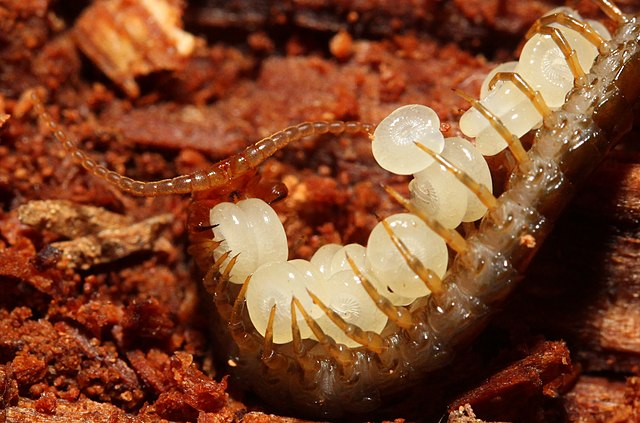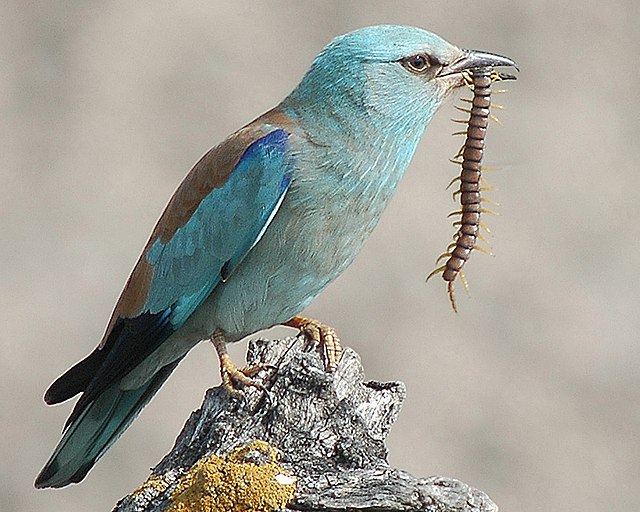Scutigeromorpha is an order of centipedes also known as house centipedes. These centipedes are found in the temperate and tropical parts of every continent except Antarctica, with their distribution significantly expanded by the introduction of the Mediterranean species Scutigera coleoptrata throughout Europe, Asia, and North America. The common species S. coleoptrata is a typical representative of this order, lying in wait for other arthropods, then seizing prey using great speed, and all species in this order reflect adaptations for this mode of life.
Scutigeromorpha
Centipedes are predatory arthropods belonging to the class Chilopoda of the subphylum Myriapoda, an arthropod group which includes millipedes and other multi-legged animals. Centipedes are elongated segmented (metameric) creatures with one pair of legs per body segment. All centipedes are venomous and can inflict painful stings, injecting their venom through pincer-like appendages known as forcipules or toxicognaths, which are actually modified legs instead of fangs. Despite the name, no centipede has exactly 100 pairs of legs; the number of pairs of legs is an odd number that ranges from 15 pairs to 191 pairs.
The forcipules of Eupolybothrus cavernicolus (Lithobiidae)
A collage showing the ultimate legs of various centipedes. From top left, proceeding clockwise: Rhysida spp., Scolopocryptops trogloclaudatus, Scolopenda dehaani, Lithobius proximus, Lithobius forficatus, Scolopendra cingulata.
A centipede mother protecting her first instar offspring
A centipede (Scolopendra cingulata) being eaten by a European roller





